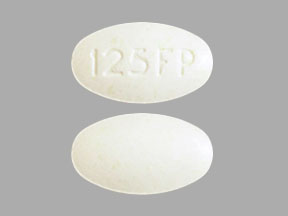Yonsa Dosage
Generic name: ABIRATERONE ACETATE 125mg
Dosage form: tablet
Drug class: Miscellaneous antineoplastics
Medically reviewed by Drugs.com. Last updated on Jan 16, 2023.
Recommended Dosage
The recommended dose of YONSA is 500 mg (four 125 mg tablets) administered orally once daily in combination with methylprednisolone 4 mg administered orally twice daily.
Important Administration Instructions
To avoid medication errors and overdose, be aware that YONSA (abiraterone acetate) tablets may have different dosing and food effects than other abiraterone acetate products. Patients receiving YONSA should also receive a gonadotropin-releasing hormone (GnRH) analog concurrently or should have had bilateral orchiectomy.
YONSA tablets must be taken as a single dose once daily with or without food [see Clinical Pharmacology (12.3)]. The tablets should be swallowed whole with water. Do not crush or chew tablets.
Dose Modification Guidelines in Hepatic Impairment and Hepatotoxicity
Hepatic Impairment
In patients with baseline moderate hepatic impairment (Child-Pugh Class B), reduce the recommended dose of YONSA to 125 mg once daily. In patients with moderate hepatic impairment monitor ALT, AST, and bilirubin prior to the start of treatment, every week for the first month, every two weeks for the following two months of treatment and monthly thereafter. If elevations in ALT and/or AST greater than 5X upper limit of normal (ULN) or total bilirubin greater than 3X ULN occur in patients with baseline moderate hepatic impairment, discontinue YONSA and do not re-treat patients with abiraterone acetate [see Use in Specific Populations (8.6) and Clinical Pharmacology (12.3)].
Do not use YONSA in patients with baseline severe hepatic impairment (Child-Pugh Class C).
Hepatotoxicity
For patients who develop hepatotoxicity during treatment with YONSA (ALT and/or AST greater than 5X ULN or total bilirubin greater than 3X ULN), interrupt treatment with YONSA [see Warnings and Precautions (5.3)]. Treatment may be restarted at a reduced dose of 375 mg once daily following return of liver function tests to the patient’s baseline or to AST and ALT less than or equal to 2.5X ULN and total bilirubin less than or equal to 1.5X ULN. For patients who resume treatment, monitor serum transaminases and bilirubin at a minimum of every two weeks for three months and monthly thereafter.
If hepatotoxicity recurs at the dose of 375 mg once daily, re-treatment may be restarted at a reduced dose of 250 mg once daily following return of liver function tests to the patient’s baseline or to AST and ALT less than or equal to 2.5X ULN and total bilirubin less than or equal to 1.5X ULN.
If hepatotoxicity recurs at the reduced dose of 250 mg once daily, discontinue treatment with YONSA.
Permanently discontinue YONSA for patients who develop a concurrent elevation of ALT greater than 3 x ULN and total bilirubin greater than 2 x ULN in the absence of biliary obstruction or other causes responsible for the concurrent elevation [see Warnings and Precautions (5.3)].
Dose Modification Guidelines for Strong CYP3A4 Inducers
Avoid concomitant strong CYP3A4 inducers (e.g., phenytoin, carbamazepine, rifampin, rifabutin, rifapentine, phenobarbital) during YONSA treatment.
If a strong CYP3A4 inducer must be co-administered, increase the YONSA dosing frequency to twice a day only during the co-administration period (e.g., from 500 mg once daily to 500 mg twice a day). Reduce the dose back to the previous dose and frequency, if the concomitant strong CYP3A4 inducer is discontinued [see Drug Interactions (7.1) and Clinical Pharmacology (12.3)].
Frequently asked questions
- Why is Yonsa taken with methylprednisolone?
- How long does it take to work?
- Is this a form of chemotherapy?
- What's the difference between Yonsa and Zytiga?
- Why is prednisone prescribed with Zytiga?
- What does abiraterone therapy do?
More about Yonsa (abiraterone)
- Check interactions
- Compare alternatives
- Pricing & coupons
- Drug images
- Side effects
- During pregnancy
- FDA approval history
- Drug class: miscellaneous antineoplastics
- En español
Patient resources
- Yonsa drug information
- Yonsa (Abiraterone Oral) (Advanced Reading)
- Yonsa (Abiraterone, micronized Oral) (Advanced Reading)
Other brands
Professional resources
Other brands
Related treatment guides
Further information
Always consult your healthcare provider to ensure the information displayed on this page applies to your personal circumstances.


